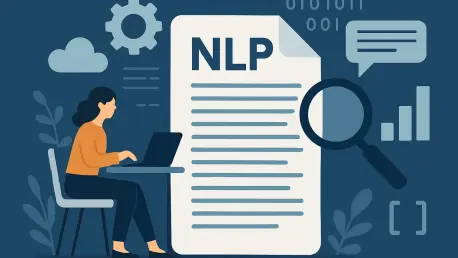In the rapidly evolving field of Natural Language Processing (NLP), the ability to transform raw text into actionable insights stands as a critical skill for data scientists, researchers, and developers alike. Imagine tackling vast datasets of unstructured text—think customer reviews, social media posts, or academic papers—and uncovering hidden patterns, topics, or semantic relationships with just a few lines of code. This is the power of a well-structured end-to-end NLP pipeline, and with the help of Gensim, a robust open-source library, such a workflow becomes not only accessible but also highly customizable. Designed to handle everything from preprocessing to advanced modeling, this tutorial offers a comprehensive guide to building a complete pipeline that integrates core techniques like topic modeling, word embeddings, and semantic search. By leveraging supporting libraries and environments like Google Colab, the process becomes seamless, even for those new to the field. This article dives into the essential steps to construct such a pipeline, ensuring that complex text analysis tasks are broken down into manageable components. From setting up the environment to evaluating model performance, each stage is crafted to provide a solid foundation for experimenting with text data at scale. Whether the goal is to classify documents, discover latent themes, or build a search engine, mastering these techniques opens up a world of possibilities for real-world applications.
1. Setting Up the Environment for Success
Building a functional NLP pipeline begins with laying a strong technical foundation. The first step involves installing and upgrading critical libraries to ensure compatibility and performance. Key tools include SciPy (version 1.11.4) for scientific computing, Gensim (version 4.3.2) for core NLP tasks, and NLTK for linguistic processing. Visualization libraries like Matplotlib and Seaborn, alongside data handling tools such as Pandas and NumPy, are also essential, as is Scikit-learn for machine learning support. Updating setuptools prevents dependency conflicts, creating a smooth setup. Once installation is complete, restarting the runtime in environments like Google Colab is necessary to load all libraries correctly. This step, though simple, is crucial to avoid errors during execution. By following these instructions—installing via pip commands and restarting the runtime—users ensure that the system is primed for the intensive computations ahead.
After installation, importing the required modules sets the stage for pipeline development. This includes loading NumPy and Pandas for data manipulation, Matplotlib and Seaborn for visualization, and WordCloud for topic representation. Gensim modules such as corpora, models, and similarities, along with specific models like Word2Vec, LdaModel, and TfidfModel, are imported to handle various NLP tasks. NLTK resources like ‘punkt’ for tokenization and ‘stopwords’ for filtering are downloaded quietly to support text preprocessing. Configuring the environment by suppressing warnings keeps the output clean, enhancing focus on results. This meticulous preparation, though often overlooked, underpins the success of subsequent steps, ensuring that every tool is readily available for building a robust pipeline capable of handling complex text analysis workflows.
2. Introducing the Modular Framework for Text Analysis
At the heart of this NLP journey lies the AdvancedGensimPipeline class, a modular framework designed to encapsulate every stage of text analysis into a single, reusable structure. This class simplifies the complexity of handling raw data through to generating insights by organizing tasks like preprocessing, model training, and evaluation into distinct methods. Key components include initializing attributes for storing dictionaries, corpora, and models such as LDA for topic modeling, Word2Vec for embeddings, and TF-IDF for similarity analysis. The framework also supports visualization and classification, making it a comprehensive tool for diverse applications. By structuring the workflow in this manner, it becomes easier to manage and adapt the pipeline for specific needs, whether for academic research or industry projects.
The initial steps within this framework involve creating a sample corpus for demonstration purposes. A diverse set of documents covering topics like data science, cloud computing, and machine learning provides a realistic dataset to test the pipeline’s capabilities. Preprocessing these documents is the next critical task, using Gensim filters to strip away irrelevant elements such as tags, punctuation, and numbers, while converting text to lowercase and removing stopwords with NLTK. This cleaning process ensures that only meaningful content remains for analysis. Building a dictionary of unique words and a bag-of-words corpus then transforms the raw text into a format suitable for modeling. These foundational steps, while technical, are essential for preparing data that can yield accurate and interpretable results in later stages of the pipeline.
3. Training and Evaluating Core NLP Models
With the data prepared, the focus shifts to training essential models that form the backbone of the pipeline. The Word2Vec model is trained to generate word embeddings, capturing semantic relationships with parameters like a vector size of 100, a window of 5, and 50 epochs for depth. Simultaneously, an LDA model for topic modeling is developed, typically with five topics, using settings like random state and passes to ensure consistency and quality. A TF-IDF model is also created to enable document similarity analysis, establishing a similarity index for comparisons. Each model serves a unique purpose—Word2Vec for understanding word meanings, LDA for uncovering themes, and TF-IDF for matching content—making them indispensable for comprehensive text analysis.
Evaluation and analysis follow training to assess model effectiveness. Word similarities are examined using Word2Vec, identifying related terms for test words like ‘machine’ or ‘data’ and exploring analogies where vocabulary permits. Topic coherence for the LDA model is measured using the c_v metric, providing insight into topic interpretability, while discovered topics are displayed with their top words for review. Document similarity analysis with TF-IDF identifies the closest matches to a query document, offering practical utility. These evaluation steps ensure that the models not only function but also deliver meaningful outputs, allowing for adjustments if performance falls short of expectations. This rigorous approach to training and assessment builds confidence in the pipeline’s ability to handle real-world text data.
4. Visualizing Insights and Deepening Analysis
Visualization plays a pivotal role in making complex NLP results accessible and actionable. Within the pipeline, heatmaps illustrate the distribution of topics across documents, highlighting dominant themes at a glance. Word clouds for each topic visually represent key terms, aiding in quick interpretation of thematic content. These tools transform abstract data into tangible insights, making it easier to grasp the underlying structure of the text corpus. Beyond basic visuals, advanced topic analysis delves into the distribution of dominant topics and their probabilities across documents, providing a deeper understanding of content organization. Such visual and analytical methods are crucial for validating model outputs and communicating findings effectively.
Further exploration through advanced techniques enhances the pipeline’s depth. Document classification demonstrates how new content can be categorized based on trained models, calculating topic probabilities and identifying the most similar existing documents. This functionality proves invaluable for applications like content recommendation or archival organization. Additionally, comparing LDA models with varying topic counts—such as 3, 5, 7, and 10—using coherence and perplexity scores helps determine the optimal configuration for a given dataset. Line plots of these metrics guide decision-making, ensuring the chosen model balances interpretability and fit. Together, these visualization and analysis steps elevate the pipeline from a technical exercise to a practical tool for deriving meaningful conclusions from text.
5. Implementing Semantic Search and Running the Workflow
One of the standout features of this pipeline is the semantic search engine, which enables retrieval of relevant documents based on a query. By preprocessing the input, converting it to TF-IDF representation, and comparing it against the corpus using the similarity index, the system returns the top matches with their scores. This functionality is ideal for applications requiring information retrieval, such as search tools or knowledge bases. Testing this feature with queries like “artificial intelligence neural networks deep learning” showcases the pipeline’s ability to pinpoint related content accurately. Semantic search adds a layer of practicality, transforming the pipeline into a solution for real-time user needs.
Executing the complete workflow ties all components together into a cohesive process. Initializing the AdvancedGensimPipeline class and running the full sequence—from data creation to model training and evaluation—ensures every aspect is covered. Summary metrics, including the final coherence score, vocabulary size, and Word2Vec embedding dimensions, are reviewed to confirm successful execution. This holistic run not only validates the pipeline’s integrity but also prepares the trained models for immediate use in further experimentation or deployment. The structured approach to running the workflow guarantees that no step is overlooked, providing a reliable framework for tackling diverse NLP challenges with confidence.
6. Reflecting on a Versatile Text Analysis Solution
Looking back, the journey through constructing this NLP pipeline with Gensim revealed a powerful, modular workflow that adeptly handled every facet of text analysis. From the meticulous preprocessing of raw documents to the intricate training of models like Word2Vec and LDA, each phase was executed with precision to transform unstructured data into structured insights. The integration of TF-IDF similarity for search capabilities and coherence evaluation for model quality stood out as pivotal in ensuring robustness. Visualizations and classification demonstrations further enriched the process, making outcomes not just technical but also interpretable for varied audiences.
Moving forward, the adaptability of this framework offers immense potential for learners, researchers, and practitioners alike. Consider applying this pipeline to specific domains—be it analyzing customer feedback for sentiment trends or categorizing vast archives of scientific literature for thematic insights. Experimenting with different datasets or tweaking model parameters can unlock new applications, while integrating additional libraries might enhance functionality further. As a next step, exploring how to scale this pipeline for larger datasets or real-time processing could address enterprise-level needs. This foundation, built on comprehensive techniques and practical tools, paves the way for advanced experimentation and production-ready text analytics solutions in an ever-growing field.









